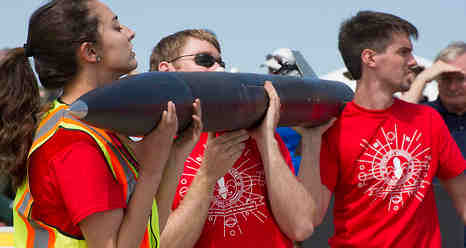When Human Voice Travels from Earth to Mars
NASA’s Mars Curiosity has debuted the first recorded human voice that traveled from Earth to another planet and back, said NASA in a statement released Monday, August 27.
In spoken words radioed to the rover on Mars and back to NASA’s Deep Space Network (DSN) on Earth, NASA Administrator Charles Bolden (pictured above) noted the difficulty of landing a rover on Mars, congratulated NASA employees and the agency’s commercial and government partners on the successful landing of Curiosity earlier this month, and said curiosity is what drives humans to explore.
“The knowledge we hope to gain from our observation and analysis of Gale Crater will tell us much about the possibility of life on Mars as well as the past and future possibilities for our own planet. Curiosity will bring benefits to Earth and inspire a new generation of scientists and explorers, as it prepares the way for a human mission in the not too distant future,” Bolden said in the recorded message.
[ Also Read: Is Mars a Habitable Place for Humans? ]The voice playback was released along with new telephoto camera views of the varied Martian landscape Monday at NASA’s Jet Propulsion Laboratory (JPL), Pasadena, Calif.
The telephoto images beamed back to Earth show a scene of eroded knobs and gulches on a mountainside, with geological layering clearly exposed. The new views were taken by the 100-millimeter telephoto lens and the 34-millimeter wide angle lens of the Mast Camera (Mastcam) instrument. Mastcam has photographed the lower slope of the nearby mountain called Mount Sharp.
[ Also Read: Moon Walker Neil Armstrong Passes Away ]Meanwhile, NASA has selected a new mission, set to launch in 2016, that will take the first look into the deep interior of Mars to see why the Red Planet evolved so differently from Earth as one of solar system’s rocky planets. (Read: NASA to Take First Look Deep Inside Mars)
A drive early Monday placed Curiosity directly over a patch where one of the spacecraft’s landing engines scoured away a few inches of gravelly soil and exposed underlying rock. Researchers plan to use a neutron-shooting instrument on the rover to check for water molecules bound into minerals at this partially excavated target.
According to NASA, Curiosity already is returning more data from the Martian surface than have all of NASA’s earlier rovers combined.
Photo courtesy: NASA





